| The National Energy Master Plan Challenge: "Unleashing" the Mechanism; Power Plan VIII: Prioritizing Renewable Energy Development; Ministry of Industry and Trade Announces National Sectoral Plans on Energy and Minerals; |
The Industry and Trade Newspaper respectfully presents the full text of Decision No. 893/QD-TTg of the Prime Minister approving the National Energy Master Plan for the period 2021-2030, with a vision to 2050.
 |
| Decision No. 893/QD-TTg of the Prime Minister approving the National Energy Master Plan for the period 2021-2030, with a vision to 2050. |
Based on the Law on Organization of the Government dated June 19, 2015; and the Law amending and supplementing a number of articles of the Law on Organization of the Government and the Law on Organization of Local Government dated November 22, 2019;
Based on the Planning Law dated November 24, 2017;
Based on Resolution No. 61/2022/QH15 dated June 16, 2022, of the National Assembly on continuing to strengthen the effectiveness and efficiency of implementing policies and laws on planning and some solutions to overcome difficulties and obstacles, accelerate the progress of planning and improve the quality of planning for the period 2021 - 2030;
Based on Resolution No. 81/2023/QH15 dated January 9, 2023, of the National Assembly on the National Master Plan for the period 2021-2030, with a vision to 2050;
Based on Decree No. 37/2019/ND-CP dated May 7, 2019 of the Government detailing the implementation of a number of articles of the Planning Law;
According to Report No. 4225/TTr-BCT dated July 3, 2023, from the Ministry of Industry and Trade on the approval of the National Energy Master Plan for the period 2021-2030, with a vision to 2050; and the opinions of ministries, sectors, and localities on the National Energy Master Plan for the period 2021-2030, with a vision to 2050.
DECISION:
Article 1. Approving the National Energy Master Plan for the period 2021-2030, with a vision to 2050 (hereinafter referred to as the National Energy Plan) with the following main contents:
I. SCOPE AND BOUNDARIES OF THE PLANNING AREA
National energy planning encompasses sub-sectors such as oil and gas, coal, electricity, and new and renewable energy, with tasks ranging from basic investigation, exploration, extraction, production, storage, distribution, and utilization to other related activities.
II. DEVELOPMENT PERSPECTIVES AND OBJECTIVES
1. Development perspective
a) Energy plays a crucial and essential role in socio-economic development. Energy development must be one step ahead to ensure national energy security and promote rapid and sustainable national development, build an independent and self-reliant economy, improve people's lives, and ensure national defense and security. National energy planning must have a long-term vision, be effective, sustainable, and place national and ethnic interests above all else.
b) National energy planning must ensure continuity, objectivity, scientific rigor, and overall optimization of factors related to energy exploitation, production, distribution, and efficient energy use, in accordance with the spatial context and comparative advantages of different regions and localities.
c) National energy planning must be dynamic and open, adapting to the context and situation of the global energy transition. It should effectively exploit and utilize domestic energy resources, combined with rational import and export. Energy development must go hand in hand with the protection of resources, the environment, and ecosystems. The development of renewable and new energy sources should be considered an opportunity for the overall development of the energy industry ecosystem.
d) The State shall focus on investing in and encouraging economic sectors to develop sustainable energy based on the principle of healthy competition and the implementation of market mechanisms for all types of energy, ensuring a harmonious balance of interests among entities involved in energy investment and use, and meeting the development requirements of regions and localities.
d) Developing energy in line with global scientific and technological trends, especially renewable energy, new energy sources, and non-energy products, linked to the transformation of the country's economic model towards green growth, green economy, circular economy, and low-carbon economy. Developing all types of energy in a comprehensive, rational, and diversified manner according to the roadmap and commitments of Vietnam in sustainable, equitable, and just energy transition.
2. Development Objectives
a) Overall objectives
- To firmly ensure national energy security, meet the requirements of socio-economic development and industrialization and modernization of the country, ensure national defense and security, improve the lives of the people, and protect the ecological environment.
- Successfully implementing the energy transition will significantly contribute to achieving the goal of net-zero emissions by 2050. The energy sector will develop harmoniously across its sub-sectors with integrated and smart infrastructure, reaching an advanced level in the region and aligning with global trends in science and technology.
- Develop an independent and self-reliant energy industry; form a comprehensive energy industry ecosystem based on renewable and new energy sources, aiming to become a regional center for clean energy industry and renewable energy exports.
b) Specific objectives
- Regarding ensuring national energy security
+ To meet domestic energy needs and achieve socio-economic development goals with an average GDP growth rate of approximately 7% per year during the 2021-2030 period, and approximately 6.5-7.5% per year during the 2031-2050 period:
Total final energy demand is projected at 107 million tons of oil equivalent by 2030 and is expected to reach 165-184 million tons of oil equivalent by 2050.
Total primary energy supply is projected to reach 155 million tons of oil equivalent by 2030 and 294-311 million tons of oil equivalent by 2050.
+ Increase the total national petroleum reserves (including crude oil and products) to 75-80 days of net imports by 2030. After 2030, consider gradually increasing reserves to 90 days of net imports.
- Regarding just energy transition
+ The share of renewable energy in total primary energy will be 15-20% by 2030 and approximately 80-85% by 2050.
+ Energy savings of approximately 8-10% by 2030 and 15-20% by 2050 compared to the business-as-usual scenario.
Greenhouse gas emissions are projected to reach approximately 399-449 million tons in 2030 and around 101 million tons in 2050. The target is to reduce greenhouse gas emissions by 17-26% by 2030 and approximately 90% by 2050 compared to the business-as-usual scenario. The goal is to reach peak emissions in 2030, provided that commitments under the JETP are fully and effectively implemented by international partners.
- Regarding the development of the energy industry
+ Exploit and utilize domestic energy resources effectively.
Crude oil production is projected to reach 6.0 - 9.5 million tons/year during the period 2021 - 2030. The target for the period 2031 - 2050 is 7.0 - 9.0 million tons/year.
Natural gas production is projected to reach 5.5 - 15 billion m3/year during the period 2021 - 2030. The target for the period 2031 - 2050 is 10 - 15 billion m3/year.
Coal production for the period 2021-2030 is projected at approximately 41-47 million tons of commercial coal per year. The target for the period 2031-2050 is approximately 39 million tons of commercial coal by 2045 and 33 million tons by 2050. The goal is to begin trial operation of the Red River Coal Basin before 2040 and move towards industrial-scale mining before 2050 (if the trial is successful).
+ Focus on developing the energy industry towards becoming a regional center for clean energy and renewable energy exports, establishing and developing renewable energy centers in regions and localities with advantages:
The goal is to establish and develop several clean energy centers by 2030, encompassing energy production and utilization, renewable energy equipment manufacturing, oil and gas processing, construction, installation, and related services, in the Northern, South Central, and Southern regions of Vietnam, when favorable conditions arise.
Develop new energy production to meet domestic needs and for export. Strive to achieve a green hydrogen production capacity of approximately 100-200 thousand tons/year by 2030. Aim for a green hydrogen production capacity of approximately 10-20 million tons/year by 2050.
III. ORIENTATION AND OBJECTIVES OF THE ENERGY SUB-SECTORAL PLANNING
1. Oil and Gas Sector
a) The field of oil and gas exploration, prospecting, and production.
- Oil and gas exploration and prospecting
+ Orientation:
Strengthening basic research and exploration of oil and gas domestically to increase oil and gas reserves; implementing specific policies to encourage large oil and gas companies from leading countries to participate in deep-water, offshore, and sensitive areas, linked to the protection of national maritime sovereignty.
Actively explore in traditional shallow water areas, conduct research on new exploration targets, new sedimentary basins and unconventional hydrocarbon forms (dense reservoirs, coalbed methane, shallow gas, shale gas, gas hydrates, etc.) to supplement reserves for long-term exploitation.
For shale oil and gas, and gas hydrates (combustible ice), actively conduct more in-depth geological research and assessment, and apply scientific and technological advancements to expand the scope of exploration; promptly implement comprehensive assessments and accelerate trial production when conditions permit.
Focus on intensifying exploration and prospecting in the Cuu Long, Nam Con Son, Ma Lai - Tho Chu, and Song Hong basins; simultaneously, conducting extensive exploration and expansion of traditional targets to supplement reserves and utilize existing infrastructure for development and exploitation; gradually shifting towards exploring and assessing the potential for oil and gas exploitation from non-traditional targets. Continue expanding exploration in deepwater, offshore areas such as the Phu Khanh and Tu Chinh - Vung May basins, etc.
Basic investigations, supplementary documentation, and exploration of sparsely studied areas and transitional shallow water zones will be conducted alongside continued 2D seismic surveys with a denser network of transects; research and assessment of the prospects of discovered structures will be carried out, and exploratory drilling will be conducted on the most promising structures in areas deeper than 200 m and further offshore.
Conducting 2D/3D seismic data acquisition and processing/supplementary acquisition using new, advanced technologies to synchronize high-quality seismic data across the entire basin/area; gradually implementing basic surveys and research on promising gas hydrate areas in the South Con Son and Tu Chinh - Vung May regions, and researching the potential of unconventional oil and gas (tight reservoirs, coalbed methane, shallow gas, shale gas, gas hydrates, etc.) in the Red River, Cuu Long, and South Con Son basins.
Continue surveying and collecting seismic and geophysical data both domestically and internationally to study the geological structure and assess the potential for oil, gas, and gas hydrates in the Truong Sa - Hoang Sa Basin area when conditions are favorable.
Focus exploration activities in three areas: the Southern Red River Basin, the Central South Con Son Basin, and the Cuu Long Basin.
Increase the acquisition and reprocessing of 2D/3D seismic data, especially in key areas, to enhance resource extraction.
+ Specific objectives:
Every 5-10 years, a comprehensive assessment of the potential and reserves of oil and gas on Vietnam's mainland and continental shelf is conducted.
. Increase in reserves: 2021 - 2030 period: 16 - 22 million tons of oil equivalent/year, compensation factor 0.9 - 1.1. Target for the period 2031 - 2050: 16 - 27 million tons of oil equivalent/year, compensation factor 0.6 - 1.0.
- Oil and gas exploration
+ Orientation:
Effectively manage the mines, optimize and maintain the efficient exploitation of oil and gas fields that have been brought into production.
Develop and bring existing oil and gas fields into rational and efficient exploitation to ensure the long-term use of domestic oil and gas resources, focusing on potential areas such as deepwater offshore and unconventional oil and gas deposits. Develop cooperation plans and joint exploitation mechanisms in overlapping areas.
Continue to promote research and application of solutions to improve oil recovery at oil fields.
. Promote small/marginal mining by applying new technologies, connecting to maximize the use of invested infrastructure, and implementing government incentive policies.
Focus resources on accelerating the progress of two major gas projects: the Block B&48/95 and 52/97 gas projects and the Blue Whale gas project.
+ Specific objectives:
Domestic crude oil production: crude oil production for the period 2021-2030 is projected to reach 6.0-9.5 million tons/year. The target for the period 2031-2050 is 7.0-9.0 million tons/year.
Onshore natural gas production: gas production for the period 2021-2030 is projected to reach 5.5 - 15.0 billion m3/year. The target for the period 2031-2050 is 10.0 - 15.0 billion m3/year.
b) Gas industry sector
- Orientation:
+ Develop a complete and integrated gas industry sector encompassing all stages: gas exploration, collection, transportation, processing, storage, distribution, and import/export of gas products.
+ Develop the gas consumption market according to market mechanisms with state regulation and gradually integrate with regional and global gas markets.
+ Operate existing gas gathering, transportation, processing, and treatment pipeline systems safely and efficiently. Continue to optimize and maximize gas collection from large-reserve gas fields, while simultaneously increasing collection from small-reserve and marginal fields to ensure maximum gas collection through existing pipelines in the Red River, Mekong, Nam Con Son, and Malay-Tho Chu basins.
+ Promote the implementation of projects for developing, extracting, and gathering gas using pipeline systems and floating CNG vessels at fields without existing gathering systems, expanding the scope of gas gathering (CNG, LNG, etc.) from fields that are not capable of pipeline gathering (small fields, fields with marginal value, fields with high CO₂ content, etc., especially associated gas fields).
+ Invest in the construction of gas processing plants and pipelines to transport gas to these plants, in order to supply gas to thermal power plants, gas processing plants, and industrial consumers.
+ Strengthen infrastructure investment, promote and encourage contractors to invest in building offshore gas gathering systems to connect with existing pipeline systems. Implement the construction of pipelines to import gas from fields in neighboring countries into the existing pipeline system and new pipelines to be built in the future. Cooperate with domestic and foreign partners to invest in research and apply appropriate technological solutions to recover gas currently being burned off at offshore platforms, separating high-value products such as ethane, propane/butane (LPG), and condensate at gas processing plants to enhance the value of oil and gas resources. Build infrastructure to collect and transport gas from currently operating fields.
+ Develop and construct LNG terminals and import natural gas (LNG, CNG) to serve electricity generation, industrial, and domestic needs. Seek import sources from Malaysia, Indonesia, Brunei, etc., utilizing existing infrastructure, while simultaneously promoting international relations to secure import sources of LNG and CNG from countries with readily available supplies and favorable trade and transportation conditions, ready to import LNG from 2023.
+ Complete the synchronized system for supplying natural gas, LNG, CNG, LPG, and DME nationwide to meet fuel needs for energy, fertilizers, industry, transportation, and domestic use. Continue developing the low-pressure natural gas pipeline transportation system to meet the needs of industrial consumers along the pipeline routes and residential areas in major cities.
+ Focus resources on accelerating the implementation of gas industry projects, including: the Thi Vai LNG import terminal project (phase 1 with a capacity of 1 million tons/year, expected to be completed in 2023; phase 2 increasing capacity to 3 million tons/year, expected to be completed after 2025); the Son My LNG import terminal project (capacity of 3.6 million tons/year, expected to complete phase 1 in 2026-2027); the Block B gas project (capacity of 6.4 billion m3/year, expected to be completed in 2027); and the Blue Whale gas project chain (capacity of 7-9 billion m3/year, expected to be completed before 2030).
- Specific objectives:
+ Maximize the collection of associated gas from blocks/fields exploited by PVN and oil and gas contractors in Vietnam.
+ Develop infrastructure to ensure sufficient capacity to supply 100% of the raw gas demand for electricity and other consumers, with the capacity to import liquefied natural gas reaching approximately 15.7 - 18.2 billion m3 by 2030 and a target of approximately 10.6 - 12.2 billion m3 by 2050.
+ Develop the gas market to reach approximately 30.7 - 33.2 billion m3/year by 2030. Aim for around 20 - 22 billion m3 by 2050.
c) Oil and gas processing sector
- Orientation:
+ Develop the oil and gas processing sector to meet domestic needs and aim for export. Attract foreign investment and private investment to develop the oil and gas processing sector, ensuring a balance of national and investor interests.
+ Focus on developing an integrated system of oil refining with petrochemicals and chemicals to increase the added value of petroleum products, create raw materials and fuels to serve domestic industrial production development, aim for exports, and reduce the trade deficit.
+ Research and implement investment in improvements/upgrades to adapt to changing market trends and increasingly stringent environmental standards (such as those of oil refineries, etc.). Research and invest in the development of new petrochemical/specialized chemical products with high added value.
+ Maintain safe, stable, and efficient operation of existing oil refineries and condensate processing plants; diversify the products of these plants.
+ Leverage the geographical location and existing infrastructure to develop deep processing plants, factories, and service facilities. Research and invest in the construction of transportation, storage, production, and trading chains for crude oil/petroleum products in the area of the existing refinery. Complete the Dung Quat Refinery upgrade and expansion project, establishing a national energy and petrochemical center in the Dung Quat Economic Zone.
+ Research and invest in new petrochemical/chemical projects linked to oil and gas processing centers.
+ Research on hydrogen production and renewable energy generation: integration with petrochemical, chemical, and fertilizer plants, use as fuel for fuel cells, and a focus on completing the downstream hydrogen value chain.
- Specific objectives:
+ The production of petroleum products must meet at least 70% of domestic demand.
+ Operate factories safely and stably at design capacity, while continuously improving, optimizing, diversifying products and implementing cost reduction measures.
d) The field of transportation, storage and distribution of petroleum products
- Orientation:
+ Develop a rational petroleum distribution system to ensure smooth circulation and stabilize the consumer market, meeting all domestic petroleum consumption needs.
+ Strengthen measures to increase reserves of crude oil and petroleum products.
+ Encourage the widespread use of biofuels and new fuels to minimize dependence on fossil fuels and protect the environment.
- Specific objectives:
+ By 2030, increase the total national petroleum reserves (including crude oil and products) to 75-80 days of net imports, of which: Production reserves: 20-25 days of production; National reserves: 15-20 days of net imports; Commercial reserves: 30-35 days of net imports.
+ After 2030, consider gradually increasing the reserve requirement to 90 days of net imports.
2. Coal industry
a) Coal exploration work
- Orientation:
+ Focus on exploring and upgrading existing coal resources to ensure reliability for mining design and accelerate the exploration of new mines, ensuring that exploration work always stays one step ahead.
+ Innovate and apply advanced exploration technologies, especially for areas located at great depths and with complex geological conditions; continue to seek research partners and invest in selecting appropriate technologies and exploration methods for the Red River Coal Basin.
- Specific objectives:
+ Period 2021 - 2030: Complete the previous exploration projects and implement new exploration projects with a volume of approximately 1,071-1,328 thousand meters of drilling in the Northeast Coal Basin, and approximately 102-131 thousand meters of drilling in domestic and local coal mines. Conduct exploration work within the boundaries of the planned trial mining area in the Red River Coal Basin.
+ Orientation for the period 2031 - 2050: complete the previous exploration projects and implement new exploration projects with a volume of approximately 773-943 thousand meters of drilling in the Northeast Coal Basin, and approximately 7-10 thousand meters of drilling in domestic and local coal mines; implement exploration projects in the Red River Coal Basin.
b) Coal mining operations
- Orientation:
+ Focus on developing and maintaining large-scale underground mines according to the criteria of "Green mines, Modern mines, High-yield mines, Safe mines". Develop open-pit mines in a way that increases the stripping ratio, in accordance with technical and economic conditions and relevant planning; carry out waste disposal work in a way that maximizes the use of internal waste dumps.
+ Connect small-scale mines with suitable geological, geographical, and infrastructure conditions into large-scale mines.
+ Develop mining output in a sustainable and efficient manner; safely, economically, and efficiently exploit coal resources, including coal resources in areas protecting structures and coal resources lost after underground mining has ended.
+ Invest in several research topics/projects/experimental exploitation projects in the Red River Coal Basin to select the most suitable mining technology.
+ Encourage localities with small coal reserves to invest in mining to meet local needs; focus on exploiting peat for fuel and fertilizer to serve the needs of the agricultural and forestry sectors.
+ Research on the exploitation and utilization of mine waste rock for land leveling to promote circular economy development and environmental remediation; research on processing mine waste rock for construction materials to increase the efficiency of mine waste rock exploitation and utilization.
+ Strengthen research and application of advanced technologies in coal mining, especially in large coal mines, mines near residential areas, cities, and coastal areas, etc.
+ Intensify efforts to seek foreign investment opportunities for coal exploration and exploitation (a type of coal that Vietnam has to import), ensuring efficiency and compliance with legal regulations.
- Specific objectives:
+ Period 2021 - 2030: Strive for a total raw coal production of approximately 46 - 53 million tons/year for the entire industry (excluding peat), corresponding to approximately 41 - 47 million tons of commercial coal/year.
+ Orientation for the period 2031-2050: The total raw coal production of the entire industry will gradually decrease from 53 million tons in 2030 (corresponding to approximately 47 million tons of commercial coal) to approximately 44 million tons in 2045 (corresponding to approximately 39 million tons of commercial coal) and approximately 36 million tons in 2050 (corresponding to approximately 33 million tons of commercial coal). The goal is to begin trial operation of the Red River Coal Basin before 2040 and move towards industrial-scale mining before 2050 (if the trial is successful).
c) Coal screening and processing
- Orientation:
+ Maintain and upgrade existing coal screening plants and processing centers, while maintaining mine screening clusters in a rational manner; continue investing in the construction of new centralized screening plants in each region to ensure coal processing requirements and market demand.
+ Processing domestic coal in combination with blending imported coal to maximize the variety of coal types for electricity production; diversifying products to meet domestic needs in accordance with market demands.
+ Promote research and application of science and technology in coal processing (for metallurgy, coal gasification to produce suitable gas products for the energy and industrial sectors, etc.) in order to diversify non-energy products processed from coal, meeting the requirements for environmental protection and reducing greenhouse gas emissions.
+ Implement coal screening and processing at locally managed mines in accordance with consumption needs and the capacity of mining projects, while meeting environmental protection requirements. Develop centralized peat processing facilities with advanced technology, prioritizing the processing of high-quality products for use in agriculture and forestry, while also meeting environmental protection requirements.
- Specific objectives:
+ Period 2021 - 2030:
Construct new coal screening and processing plants and centers to increase the coal screening and processing capacity in the Uong Bi area by approximately 4.0 - 5.0 million tons/year compared to the current capacity; construct a new screening plant with a capacity of approximately 1.5 million tons/year in the Uong Bi area.
Expand and increase the centralized screening and sorting capacity in the Hon Gai area to approximately 5.0 million tons/year.
The goal is to achieve a rate of approximately 60-65% of mined coal being sent to centralized screening and processing facilities for the total coal production.
+ Orientation for the period 2031 - 2050:
Continue to maintain the coal processing plants and centralized screening and processing centers that have been built; accelerate the renovation and modernization of technology, and increase the recovery rate of high-quality coal to serve exports as the demand for domestically produced coal gradually decreases.
The goal is to achieve a rate of over 65% of mined coal being sent to centralized screening and processing facilities for the total coal production.
d) The coal market and coal import and export activities
- Orientation:
Coal exports and imports should be in line with market demand and in accordance with government directives to ensure maximum satisfaction of domestic coal needs, especially coal for electricity production. Actively and proactively seek stable, long-term sources of imported coal to meet domestic demand, including considering coal reserves.
- Specific objectives:
+ Regarding the coal market: gradually forming a coal market with multiple sellers and buyers, diversifying coal supply sources for consumers; completing research on a suitable international coal price index for reference to imported coal prices in Vietnam for pilot application and further refinement to implement the coal price index in imported coal transactions suitable to Vietnam's specific conditions, operating the coal market according to the roadmap for developing a competitive energy market approved by the Prime Minister.
Regarding coal imports:
Period 2021 - 2030: Vietnam is expected to import coal in gradually increasing volumes, reaching approximately 73 million tons by 2030, of which the demand for imported coal from thermal power plants designed/planned to use imported coal is about 44 million tons.
Orientation for the period 2031-2050: The volume of imported coal is expected to continue increasing, peaking at approximately 85 million tons in 2035, then gradually decreasing to about 50 million tons in 2045. Of this, the demand for imported coal from thermal power plants designed/planned to use imported coal is projected at approximately 64 million tons in 2035, gradually decreasing to about 34 million tons in 2045. By 2050, Vietnam is expected to no longer import coal.
Regarding coal exports:
. Period 2021 - 2030: Export high-quality coal that is not needed or not fully utilized domestically, as directed annually by the Prime Minister, with an annual export volume of approximately 2.0 - 3.0 million tons.
Orientation for the period 2031-2050: Continue exporting high-quality coal that is not needed or not fully utilized domestically, as directed by the Prime Minister, until 2035; after 2035, strengthen the processing of high-quality coal from domestically produced coal to meet the needs of the world market for export.
d) Overall site planning and external transportation
- Orientation:
+ Construct new and complete existing structures on the site (mining and waste disposal areas; technical infrastructure, environmental protection facilities, etc.) to suit the needs of each coal mining, screening, and processing project; ensuring requirements for landscape, environment, disaster prevention, coal production efficiency, and flexibly meeting future land development needs.
+ Organize a transportation system (road, rail, conveyor belt) that matches the coal production capacity of each region, using modern, environmentally friendly, and economically efficient technology; connect coal mines with large consumers in the region in accordance with socio-economic development planning, urban development planning, and infrastructure planning of areas with coal mining activities; increase the use of conveyor belts, rail, and waterways for coal transportation and minimize road transport to reduce negative impacts on the environment.
+ Maintain, renovate, and upgrade certain road routes in accordance with the expansion plans for mine operations and urban development plans in the areas.
+ Invest in maintaining and constructing new conveyor belt lines, integrated with the existing dedicated railway transport system, to transport raw coal from mines to screening facilities; and finished coal from screening facilities to centralized coal depots, thermal power plants, and coal export ports in the region, in accordance with each stage of coal production.
+ Continue to maintain national railway lines for coal transport (from Mao Khe, Trang Bach, and Hong Thai mines supplying Pha Lai 1 and 2 thermal power plants and partly for domestic use; from Nui Hong mine to the northern blending station of Khanh Hoa mine) and raw material transport (Mai Pha + Na Duong railway line).
- Specific objectives:
+ Period 2021 - 2030:
Roads: approximately 125 km will be maintained to serve production; approximately 112 km will be renovated and upgraded.
Railways: Invest in maintaining, renovating, and upgrading the existing Vang Danh, Khe Than - Uong Bi - Dien Cong railway systems to transport coal, supplies, and materials for the Vang Danh, Nam Mau, and Dong Vong mining clusters; maintain the existing railway system in the Cam Pha area to transport coal from the mines to the Cua Ong Coal Sorting Plant.
Conveyor belts: Invest in maintaining existing conveyor belt lines with a total length of approximately 46 km; construct new conveyor belt lines with a total length of approximately 45 km in the Uong Bi, Dong Trieu, Hon Gai, and Cam Pha areas.
+ Orientation for the period 2031 - 2050:
Northeast Coal Basin: Invest in maintaining the roads, railways, and conveyor belts built in the previous phase.
. Red River Coal Basin: Construction of new conveyor belt lines with a total length of approximately 4.5 km.
e) Planning for coal import and export ports
- Orientation:
+ Renovate, expand, and construct new inland ports in coal-producing regions to serve the import, export, and blending of coal using advanced, modern, and environmentally friendly technologies.
+ Study the renovation and expansion of existing specialized ports of coal consumers to enable direct import and transshipment of coal for ships of suitable tonnage when centralized ports are not yet established in these areas.
+ Renovate, expand, and build new ports concentrated in coal-producing regions and according to areas (North, South) in accordance with the Master Plan for the Development of Vietnam's Seaport System approved by the Prime Minister and other relevant plans, with appropriate port types, synchronized technical infrastructure and logistics services, advanced and modern technology, and environmentally friendly practices to serve coal import, export, and blending, taking into account appropriate coal storage capacity to meet production requirements, especially for electricity generation; gradually eliminate small, scattered wharves with outdated technology.
- Specific objectives:
+ Inland coal import and export ports:
. Period 2021 - 2030: Continue investing in maintaining and upgrading existing ports and port clusters (Ben Can, Hong Thai Tay, Dien Cong, Lang Khanh, Km 6, Cam Pha, Khe Day, Mong Duong Chemical) to meet the requirements of importing approximately 16 - 20 million tons of coal/year and exporting approximately 45 - 50 million tons of coal/year.
Orientation for the period 2031 - 2050:
Northeast Coal Basin: Invest in the construction of a new Dong Trieu - Pha Lai port with a capacity of 1.0 - 2.0 million tons/year to serve the coal consumption of the Dong Trieu, Chi Linh I, and Chi Linh II mines.
Red River Coal Basin: Invest in new ports specifically for coal export at suitable locations, with each port having a capacity of approximately 1.0 - 2.0 million tons/year and accommodating vessels with a tonnage of up to 2,000 tons.
+ Coal import and transshipment port:
Period 2021 - 2030:
Northern region (Northern and North Central Vietnam): Invest in the construction of a major port serving the import, transshipment, and supply of coal in the northern region, in conjunction with deep-water seaports according to the Vietnam Seaport Development Plan to serve power plants (Cam Pha, Quang Ninh; Nghi Son, Thanh Hoa; Son Duong, Ha Tinh; Quang Trach, Quang Binh). The projected capacity of the major port is approximately 20-30 million tons/year; potential locations for studying the construction of a major port serving coal import, transshipment, and supply include Hon Net (Quang Ninh province), Quang Trach (Quang Binh province),...
Southern region (South Central and Southern Vietnam): Invest in the construction of a major port serving the import, transshipment, and supply of coal to the Southern region, in conjunction with deep-water seaports according to the Vietnam Seaport Development Plan to serve power plants (Van Phong, Khanh Hoa; Vinh Tan, Binh Thuan; Duyen Hai, Tra Vinh...). The projected capacity of the major port is approximately 25-35 million tons/year; potential locations for studying the construction of a major port serving the import, transshipment, and supply of coal in the Southern region include Go Gia (Ho Chi Minh City), Duyen Hai (Tra Vinh province), Van Phong (Khanh Hoa province),...
Orientation for the period 2031-2050: continue to maintain the key ports serving coal import, transshipment, and supply that were invested in during the previous period, combined with deep-water seaports invested in according to the Vietnam Seaport Development Plan.
g) Mine closure work
- Orientation:
Comply with current legal regulations; consider selecting appropriate timing and methods for mine closure to ensure thorough exploitation, resource conservation, and maximum effectiveness of invested facilities.
- Specific objectives:
Implement synchronized mine closure plans, in accordance with the completion dates of coal mining investment projects in each specific phase, as detailed in the Implementation Plan for the Master Plan for each period.
3. New and Renewable Energy Sector
For the new and renewable energy sector, the renewable energy types included in the plan are: (i) wind energy; (ii) solar energy; (iii) biomass energy; (iv) solid waste energy; (v) small hydropower; (vi) other renewable energy (tidal, geothermal, and biogas); and new energy (hydrogen, ammonia, and hydrogen-derived fuels). The overall objective of the National Energy Plan is to promote the production and use of renewable energy, enhance the application of renewable energy technologies, and make a significant contribution to fulfilling Vietnam's commitment at COP26 to achieve net zero emissions by 2050.
The development orientation is to strongly promote offshore wind power combined with other renewable energy sources (solar power, onshore wind power, etc.) to produce new energy (hydrogen, green ammonia, etc.) to serve domestic needs and exports. Renewable energy sources producing new energy for domestic and export needs are prioritized/allowed to develop without limitations on the basis of ensuring national defense and security, energy security, and high economic efficiency, becoming a new economic sector of the country.
a) Renewable energy for electricity generation
- Orientation:
Continue to promote the development of renewable energy sources (hydropower, onshore and offshore wind power, solar, biomass, etc.), new energy, and clean energy (hydrogen, green ammonia, etc.) that are suitable for ensuring system safety with reasonable electricity costs, especially self-produced and self-consumed electricity sources, and rooftop solar power.
- Specific objectives:
+ Strongly develop renewable energy sources for electricity production, reaching a rate of approximately 30.9 - 39.2% by 2030, aiming for a renewable energy rate of 47% if strong international financial, technological, and governance support is received under the JETP program. The target for 2050 is for the renewable energy rate to reach 67.5 - 71.5%.
Regarding the development of the renewable energy industrial and service ecosystem:
By 2030, it is projected that two inter-regional renewable energy industrial and service centers will be established, encompassing electricity production, transmission, and consumption; renewable energy equipment manufacturing; construction, installation, and related services; and the development of a renewable energy industrial ecosystem in areas with high potential such as the Northern, South Central, and Southern regions, when favorable conditions arise.
Develop renewable energy sources and produce new energy for export. Strive to achieve an electricity export capacity of approximately 5,000-10,000 MW by 2030.
b) Renewable energy for heat production
- Orientation:
+ Promote the development of renewable energy technologies using biomass, biogas, and solar energy for heat production in industrial, commercial, and residential areas.
- Specific objectives:
+ The total renewable energy source for heat production and cogeneration of electricity will be approximately 8.0 - 9.0 million tons of oil equivalent by 2030, and approximately 17.0 - 19.0 million tons of oil equivalent by 2050.
+ Solar energy development: increasing the absorption area of solar water heaters in commercial, residential, and industrial production, providing approximately 3.1 million tons of oil equivalent by 2030 and aiming for approximately 6 million tons of oil equivalent by 2050.
+ Development of biofuels and biogas:
The use of biofuels is projected to reach approximately 0.28 million tons of oil equivalent by 2030 and 13.0 million tons of oil equivalent by 2050.
The project aims to utilize biogas with a projected construction volume of approximately 60 million m3 by 2030 and a target of around 100 million m3 by 2050.
c) Renewable energy for other sectors
- Orientation:
The development of renewable energy sources, including biofuels, hydrogen, ammonia, and hydrogen-based synthetic fuels, for use in electricity generation, transportation (road, rail, water, and air), industry (steel, chemicals, oil refining, and other industries), and residential and commercial buildings, aims to accelerate the energy transition and gradually decarbonize the economy. A technological roadmap for the production and use of hydrogen and hydrogen-based fuels should be developed.
- Specific objectives:
+ Increase hydrogen production through electrolysis and other carbon-capturing processes to 100-200 thousand tons by 2030 and aim for approximately 10.0-20.0 million tons by 2050.
+ Increase the production of synthetic fuels to approximately 2.0 - 3.0 million tons by 2050.
+ Promote the application of carbon capture, utilization, and storage solutions in industrial production facilities and power plants, aiming to capture approximately 1 million tons by 2040 and targeting 3-6 million tons by 2050.
4. Electrical Engineering
The electricity sector is implemented in accordance with the National Power Development Plan for the period 2021-2030, with a vision to 2050 (Power Plan VIII), which was approved by the Prime Minister in Decision No. 500/QD-TTg dated May 15, 2023.
5. Investment capital requirements
The total investment capital requirements for the energy sector for the entire period 2021-2050 are estimated at approximately VND 15,304 - 19,398 trillion. The investment phases are as follows:
- Period 2021 - 2030: approximately 4,133 - 4,808 trillion VND.
- The target for the period 2031 - 2050 is approximately 11,170 - 14,590 trillion VND, which will be finalized in subsequent plans/projects.
IV. LAND USE ORIENTATION FOR THE DEVELOPMENT OF ENERGY FACILITIES AND ACTIVITIES RELATED TO ENVIRONMENTAL PROTECTION, CLIMATE CHANGE RESPONSE, AND THE CONSERVATION OF ECOLOGY, LANDSCAPES, AND HISTORICAL SITES
1. Land use planning for energy development
The land requirement for the development of energy sector infrastructure is approximately 93.54 - 97.24 thousand hectares in the period 2021 - 2030, and is projected to be around 171.41 - 196.76 thousand hectares in the period 2031 - 2050.
The sea surface area for offshore structures is estimated to be approximately 334,800 - 334,800 hectares by 2030 and approximately 1,302,000 - 1,701,900 hectares by 2050.
2. Activities related to environmental protection, climate change response, and conservation of ecosystems, historical sites, and natural landscapes.
Implement a strong energy transition from fossil fuels to renewable and new energy sources to reduce emissions of pollutants and greenhouse gases, meeting the goal of net-zero emissions by 2050.
Applying new and modern technologies in line with the shift towards a low-carbon and circular economy, reducing energy consumption and emissions, and aiming to meet regulations on carbon emissions per unit of exported goods and carbon markets.
Avoid and minimize the development of energy projects and energy infrastructure in locations that pose a risk to forests, nature reserves and biodiversity, natural heritage sites, landscapes, monuments, and cultural heritage sites that have been classified in accordance with the environmental zoning in the National Environmental Protection Plan.
Implement appropriate solutions during project implementation to ensure enhanced resilience of energy facilities, safe and stable operation, and minimize risks, losses, and damage caused by climate change to energy facilities and infrastructure.
V. LIST OF IMPORTANT PROJECTS, PRIORITY INVESTMENT IN THE ENERGY SECTOR AND ORDER OF PRIORITY FOR IMPLEMENTATION
1. Criteria and justifications for developing a list of important and priority investment projects in the energy sector.
Key projects and priority investments in the energy sector are developed based on the following criteria:
a) National key projects whose investment policies are decided or approved by the National Assembly in accordance with Article 7 of the Law on Public Investment and Article 30 of the Law on Investment.
b) The project meets one of the following criteria:
- It plays a crucial role in balancing national energy supply and demand, as well as in key energy regions and centers, to ensure national energy security and meet the socio-economic development needs of the country.
- Ensuring national defense and security, protecting national sovereignty and particularly difficult areas, mountainous regions, and islands.
- Searching for and exploring primary energy sources, developing new energy sources.
- Investing in infrastructure for importing primary energy and investing in energy exploration abroad will contribute to ensuring national energy security.
- It has the characteristic of connecting regions, linking supply chains, production, and energy use, forming energy clusters and centers.
- Contributing to adaptation to climate change, reducing greenhouse gas emissions, protecting the environment (biomass, electricity produced from waste, solid waste, cogeneration, utilization of excess gas, etc.), and fulfilling climate commitments.
- Contributing to the creation of a comprehensive ecosystem for renewable energy industries and services.
- Exporting electricity and new energy produced from renewable sources.
- Efficient land use.
- Utilizing modern technology.
- High socio-economic efficiency.
Key projects, prioritized for investment, are divided into two groups:
- Key projects, priority investment: These are projects with a clear legal basis for implementation, which were planned in a previous phase or are currently in the investment preparation process.
- Potentially important projects are those formed based on the following arguments:
+ Meets the criteria of a priority investment project.
+ Feasibility of implementation: depends on the development situation in the coming period (market demand, connecting projects, related infrastructure, etc.).
+ Utilizing new, environmentally friendly technologies.
2. List of major investment projects in the energy sector
The list of major investment projects in the energy sector includes:
a) Important projects prioritized for investment are listed in Appendix IA attached to this Decision.
b) Important projects with potential are listed in Appendix IB attached to this Decision.
c) Other projects listed in Appendix II attached to this Decision.
VI. SOLUTIONS AND RESOURCES FOR IMPLEMENTING THE PLAN
1. Solutions for mobilizing and allocating investment capital
- Diversify sources of capital and forms of capital mobilization, effectively attracting domestic and foreign capital into energy development, ensuring national defense, security, and competitiveness in the energy market. Strengthen efforts to effectively utilize international support commitments (e.g., JETP, AZEC, etc.), green credit, climate credit, green bonds, etc.
- Diversify investment forms (state, private, public-private partnerships, etc.) for energy projects. Promote the role of state-owned enterprises and strongly attract domestic and foreign private sector participation in energy development. Continue negotiating and effectively utilizing funding and capital arrangement support from international partners in the process of energy transition and aiming for net-zero emissions in Vietnam.
- There is a policy prioritizing investment in the development of sustainable energy infrastructure; focusing on building infrastructure for energy import and export, and regional connectivity.
- Gradually increase the capacity to mobilize internal finance within energy corporations, general companies, and enterprises through solutions such as: improving the efficiency and performance of energy enterprises, ensuring accumulation of capital, and guaranteeing the required ratio of equity capital for development investment as stipulated by domestic and international financial institutions; moving towards the main source of capital mobilization for investment projects from the enterprises' own accumulated capital.
2. Solutions regarding mechanisms and policies
a) Energy market, energy prices
- Develop a synchronized and interconnected energy market across the electricity, coal, oil and gas, and renewable energy sectors, connecting with regional and global markets.
- Improve mechanisms, policies, and market-based tools to promote the use of energy efficiently and effectively.
- Enhance the capacity of the state management apparatus for the energy sector to promptly address legal obstacles and barriers.
- Complete the legal framework for the energy sector to align with the different stages of energy market development (gas, coal, electricity) and policies promoting renewable energy development; while ensuring consistency and avoiding overlaps or conflicts between regulations.
- Implement the restructuring of the energy sector with a specific roadmap, consistent with the stages of energy market development, ensuring a clear separation between areas and stages with natural monopolies and those with competitive potential within the energy sector, in order to enhance transparency, efficiency, and non-discrimination among participants in the energy market.
- Developing the gas and coal markets in conjunction with policies prioritizing and stabilizing the supply of gas and coal for electricity production aims to ensure national energy security.
- Gradually shift energy prices to operate under a competitive market mechanism, ensuring they accurately reflect reasonable and legitimate costs in a transparent and public manner. The State will only regulate prices and fees for stages with natural monopolies in the energy sector, or in areas and regions where there is no competition.
b) Using energy efficiently and effectively
- Improve mechanisms, policies, and market tools to promote the use of energy-saving and efficient energy. Issue mechanisms, policies, and legal regulations for the business model of energy-saving service companies (ESCOs).
- Review, revise, and supplement national standards and regulations in the energy sector to align with international regulations and standards, taking into account national standards and regulations related to the recycling and utilization of waste from energy production processes. Gradually implement measures to encourage and mandate technological and equipment innovation in the energy sector as well as other energy-intensive industries and sectors.
- Restructure energy-consuming sectors, especially the foreign-invested sector, to minimize energy intensity. Implement policies to encourage the development of energy-efficient and economically and socially effective industries.
- Review and adjust the distribution of energy consumption sources flexibly towards dispersion, limiting excessive concentration in certain localities, and closely coordinate with the redistribution of industrial and urban development space nationwide, in each region, and in each locality.
- Review and refine the National Program on Energy Saving and Efficiency for the period 2020-2030. Implement mandatory standards and regulations, along with penalties, on energy efficiency for sectors, industries, and products with high energy consumption. Develop policies to encourage consumers to use clean and renewable energy, especially in industry and transportation; promote the development of electric vehicles in line with global trends.
3. Environmental, scientific and technological solutions
a) Bảo vệ môi trường và ứng phó với biến đổi khí hậu
- Nghiên cứu, xây dựng chính sách thuế các-bon thích hợp đối với việc sử dụng nhiên liệu hoá thạch. Có cơ chế, chính sách triển khai việc thu hồi, sử dụng khí CO2. Thực hiện đánh giá hiệu quả việc sử dụng, tái chế tro, xỉ phát sinh trên cơ sở cân đối nhu cầu và khả năng tiêu thụ làm vật liệu xây dựng.
- Hoàn thiện khung chính sách, xây dựng và bổ sung hệ thống tiêu chuẩn, quy chuẩn quốc gia về khí thải và chất thải trong ngành năng lượng theo hướng tiệm cận với những tiêu chuẩn của các nước phát triển.
- Xây dựng và triển khai Đề án tích hợp mô hình kinh tế tuần hoàn vào chiến lược phát triển các doanh nghiệp năng lượng. Phát triển hệ thống quản lý và xử lý chất thải trong sản xuất năng lượng với công nghệ tiên tiến, phù hợp với điều kiện nước ta; bảo đảm năng lực tự xử lý các nguồn thải trong các doanh nghiệp năng lượng. Có cơ chế, chính sách khuyến khích phát triển công nghiệp môi trường gắn với ngành năng lượng.
- Tuân thủ nghiêm ngặt các quy định của pháp luật Việt Nam về đảm bảo an toàn và bảo vệ môi trường, thực hiện đầy đủ các cam kết tại báo cáo đánh giá tác động môi trường của tất cả các dự án; không ngừng cải thiện điều kiện, môi trường lao động và bảo đảm sức khoẻ cho người lao động.
- Tăng cường, củng cố tổ chức quản lý môi trường của các cơ quan quản lý nhà nước và các doanh nghiệp hoạt động trong lĩnh vực năng lượng.
- Thực hiện đầy đủ công tác theo dõi, quan trắc, đo đạc và quản lý các chỉ tiêu môi trường; thường xuyên kiểm tra việc thực hiện các quy định bảo vệ môi trường của doanh nghiệp năng lượng.
b) Khoa học và công nghệ
- Hình thành cơ chế liên kết giữa lực lượng nghiên cứu và phát triển khoa học - công nghệ, đổi mới sáng tạo với các doanh nghiệp và các cơ sở đào tạo trong lĩnh vực năng lượng thông qua các chương trình khoa học và công nghệ; lồng ghép hoạt động nghiên cứu và phát triển trong các chiến lược, quy hoạch, kế hoạch phát triển năng lượng.
- Tạo cơ chế khuyến khích các doanh nghiệp năng lượng tăng cường đầu tư cho nghiên cứu và phát triển; thành lập các trung tâm đổi mới sáng tạo trong lĩnh vực năng lượng.
- Tiếp tục triển khai chương trình khoa học và công nghệ trọng điểm quốc gia về nghiên cứu ứng dụng và phát triển công nghệ năng lượng giai đoạn 2021 - 2030, trọng tâm là nghiên cứu chế tạo thiết bị năng lượng và ứng dụng các dạng năng lượng mới, năng lượng tái tạo, năng lượng thông minh, tiết kiệm năng lượng.
- Tăng cường nghiên cứu, ứng dụng và chuyển giao công nghệ; xây dựng đội ngũ cán bộ khoa học công nghệ đầu ngành, có trình độ cao; tăng cường các biện pháp nhằm gắn kết chặt chẽ hơn nữa giữa nghiên cứu khoa học với đào tạo và ứng dụng.
- Đẩy mạnh nghiên cứu khoa học, hợp tác quốc tế trong lĩnh vực bảo vệ môi trường, ứng phó biến đổi khí hậu để từng bước đưa vào áp dụng các công nghệ mới nhằm nâng cao hiệu quả, tiết kiệm chi phí bảo vệ môi trường.
- Đẩy mạnh nghiên cứu các dạng năng lượng mới, như năng lượng hạt nhân, sóng biển, địa nhiệt, hydro xanh, amoniac xanh...; xây dựng các chiến lược về các dạng năng lượng mới khác.
4. Giải pháp về phát triển nguồn nhân lực
- Xây dựng chính sách phát triển nguồn nhân lực tổng thể và các chương trình đào tạo cho những khâu then chốt của ngành năng lượng. Tăng cường đào tạo đội ngũ công nhân kỹ thuật, nhân viên nghiệp vụ đáp ứng yêu cầu sử dụng trong nước, hướng tới xuất khẩu. Sử dụng có hiệu quả nguồn nhân lực đã được đào tạo về năng lượng hạt nhân đi đôi với đào tạo nâng cao.
- Xây dựng quy hoạch phát triển và kế hoạch đào tạo nguồn nhân lực cho các lĩnh vực công nghệ then chốt, tạo đột phá của ngành năng lượng.
- Xây dựng cơ chế đãi ngộ thích đáng để thu hút nguồn nhân lực chất lượng cao trong các lĩnh vực năng lượng.
- Ban hành chính sách đãi ngộ phù hợp để thu hút các chuyên gia, nhà khoa học, nguồn nhân lực trình độ cao trong và ngoài nước về làm việc trong lĩnh vực năng lượng; hình thành các nhóm khoa học và công nghệ mạnh đủ giải quyết các nhiệm vụ quan trọng trong lĩnh vực năng lượng.
- Tăng cường hợp tác, liên kết với các cơ sở đào tạo uy tín trong nước và quốc tế để phát triển nguồn nhân lực.
- Thông qua các dự án đầu tư để đào tạo, tiếp nhận các công nghệ mới, hiện đại.
- Chú trọng đào tạo nghề để có đội ngũ công nhân kỹ thuật, nhân viên nghiệp vụ lành nghề đủ khả năng nắm bắt và sử dụng thành thạo các phương tiện kỹ thuật và công nghệ hiện đại.
5. Giải pháp về hợp tác quốc tế
- Thực hiện chính sách đối ngoại năng lượng linh hoạt, hiệu quả, bình đẳng, cùng có lợi. Tăng cường quan hệ quốc tế về năng lượng trong tất cả các phân ngành, lĩnh vực phù hợp với xu thế hội nhập, tận dụng cơ hội từ các hiệp định thương mại, các quan hệ chính trị - ngoại giao thuận lợi để phát triển năng lượng.
- Đẩy mạnh hợp tác quốc tế; tích cực, chủ động xây dựng các đối tác chiến lược để thực hiện mục tiêu nhập khẩu năng lượng trong dài hạn và đầu tư tài nguyên năng lượng ở nước ngoài.
- Tích cực tham gia hợp tác năng lượng tại tiểu vùng Mê Kông mở rộng (GMS) và khu vực Đông Nam Á (ASEAN); liên kết lưới điện, hoàn thiện cơ chế mua bán điện với Trung Quốc, Lào và Cam-pu-chia. Tiếp tục nghiên cứu kết nối hệ thống khí trong khu vực, triển khai thực hiện khi điều kiện cho phép.
- Triển khai tích cực, hiệu quả các nội dung của JETP, tận dụng tối đa hỗ trợ của các đối tác quốc tế trong chuyển giao công nghệ, quản trị, đào tạo nhân lực, cung cấp tài chính, coi JETP là giải pháp quan trọng cho quá trình chuyển dịch năng lượng ở Việt Nam.
- Đẩy mạnh hợp tác, hội nhập quốc tế, khuyến khích và thu hút các đối tác thuộc mọi thành phần kinh tế ở trong nước và nhà đầu tư nước ngoài tham gia vào các lĩnh vực năng lượng.
- Mở rộng hợp tác quốc tế về nghiên cứu khoa học và phát triển công nghệ, đa dạng hoá các phương thức hợp tác để tận dụng chuyển giao công nghệ và nguồn kinh phí từ các đối tác nước ngoài và xây dựng chuỗi cung ứng trong nước đối với thiết bị năng lượng.
6. Giải pháp về tổ chức thực hiện và giám sát thực hiện quy hoạch
- Xây dựng kế hoạch thực hiện quy hoạch ngay sau khi Quy hoạch năng lượng quốc gia được phê duyệt và cập nhật kế hoạch theo tình hình thực tế hàng năm báo cáo Thủ tướng Chính phủ xem xét, phê duyệt.
- Tổ chức kiểm tra, giám sát việc thực hiện Quy hoạch năng lượng quốc gia theo quy định của pháp luật.
- Trình tự thực hiện đầu tư các đề án/dự án phát triển phải tuân thủ quy định của pháp luật liên quan (pháp luật về đầu tư, xây dựng, dầu khí, khoáng sản, bảo vệ môi trường,…), có thể được thực hiện trước và/hoặc trong giai đoạn quy hoạch để đảm bảo các đề án/dự án vào sản xuất/vận hành đúng tiến độ xác định trong Quy hoạch.
- Xây dựng cơ sở dữ liệu năng lượng, bao gồm dữ liệu về quy hoạch và tổ chức thực hiện quy hoạch để làm cơ sở giám sát tình hình thực hiện quy hoạch. Thường xuyên rà soát tình hình phát triển cung cầu năng lượng toàn quốc và các địa phương, tiến độ thực hiện các dự án năng lượng để đề xuất các giải pháp điều chỉnh cung ứng năng lượng, tiến độ nếu cần thiết, đảm bảo cung cầu năng lượng của nền kinh tế.
- Thành lập Ban Chỉ đạo quốc gia về phát triển năng lượng để theo dõi, đôn đốc việc thực hiện Quy hoạch năng lượng quốc gia, kịp thời tháo gỡ các khó khăn, vướng mắc phát sinh.
- Xây dựng và áp dụng thiết chế về tính kỷ luật và tuân thủ trong việc tổ chức triển khai Quy hoạch năng lượng quốc gia đối với các chủ đầu tư, các bộ, ngành, Ủy ban Quản lý vốn nhà nước tại doanh nghiệp và các địa phương. Xây dựng chế tài xử lý, thu hồi các dự án chậm, không triển khai theo tiến độ được giao.
Article 2. Implementation
1. Ministry of Industry and Trade
- Chịu trách nhiệm về tính chính xác của số liệu, tài liệu, hệ thống sơ đồ, bản đồ và cơ sở dữ liệu trong Hồ sơ quy hoạch, bảo đảm thống nhất với nội dung của Quyết định này.
- Tổ chức công bố quy hoạch theo quy định và triển khai thực hiện Quyết định này gắn với thực hiện nhiệm vụ phát triển kinh tế - xã hội theo quy định của pháp luật; xây dựng Kế hoạch thực hiện quy hoạch dựa trên tiêu chí, luận chứng quy định tại Quyết định này để triển khai thực hiện các mục tiêu, nhiệm vụ đề ra trong quy hoạch; tổ chức đánh giá thực hiện quy hoạch theo quy định của Luật Quy hoạch. Hoàn thành trình Thủ tướng Chính phủ Kế hoạch thực hiện quy hoạch trong năm 2023.
- Đẩy mạnh việc nghiên cứu các dạng năng lượng mới, như năng lượng hạt nhân, sóng biển, địa nhiệt, hydro xanh, amoniac xanh...; xây dựng các chiến lược về các dạng năng lượng mới.
- Đẩy mạnh xây dựng và hoàn thiện các điều kiện cần thiết cho việc phát triển thị trường năng lượng cạnh tranh hiệu quả.
- Chủ trì nghiên cứu, đề xuất sửa đổi các văn bản quy phạm pháp luật, các cơ chế ủy quyền, phân cấp trình Thủ tướng Chính phủ quyết định để tạo điều kiện bảo đảm tiến độ cho các dự án năng lượng.
2. Các bộ, ngành, Ủy ban Quản lý vốn nhà nước tại doanh nghiệp
Thực hiện đầy đủ chức năng, nhiệm vụ, quyền hạn để triển khai đúng tiến độ các dự án trong Quy hoạch năng lượng quốc gia; đề xuất cơ chế, chính sách, các giải pháp tháo gỡ vướng mắc để thực hiện hiệu quả các mục tiêu của quy hoạch, đảm bảo thống nhất, đồng bộ với việc thực hiện Chiến lược phát triển kinh tế - xã hội 10 năm 2021 - 2030, các kế hoạch phát triển kinh tế - xã hội của từng ngành và địa phương.
3. Ủy ban nhân dân các tỉnh, thành phố trực thuộc trung ương
Tổ chức thực hiện việc lựa chọn chủ đầu tư các dự án năng lượng, bố trí quỹ đất cho phát triển các công trình năng lượng theo quy định của pháp luật, trong đó ưu tiên bố trí quỹ đất để thực hiện các dự án năng lượng theo Quy hoạch; chủ trì, phối hợp chặt chẽ với các chủ đầu tư thực hiện việc giải phóng mặt bằng, bồi thường, di dân, tái định cư cho các dự án năng lượng theo quy định.
4. Tập đoàn Điện lực Việt Nam
- Giữ vai trò chính trong việc đảm bảo cung cấp điện ổn định, an toàn cho sự nghiệp phát triển kinh tế - xã hội. Thực hiện đầu tư các dự án nguồn điện và lưới điện đồng bộ theo nhiệm vụ được giao.
- Thường xuyên rà soát, đánh giá cân đối cung - cầu điện, tình trạng vận hành hệ thống điện toàn quốc và khu vực, báo cáo các cấp có thẩm quyền.
- Thực hiện triệt để các giải pháp đổi mới quản trị doanh nghiệp, nâng cao hiệu quả sản xuất kinh doanh, tăng năng suất lao động, giảm tổn thất điện năng, tiết kiệm chi phí, giảm giá thành.
5. Tập đoàn Dầu khí Việt Nam
- Chủ động xây dựng, điều chỉnh các Chiến lược, kế hoạch phát triển của Tập đoàn phù hợp Quy hoạch năng lượng quốc gia đã được phê duyệt; tăng cường huy động nguồn vốn từ các tổ chức trong và ngoài nước để thực hiện các dự án đầu tư, đặc biệt là các dự án trọng điểm dầu khí.
- Phối hợp với liên danh nhà thầu để có các phương án khai thác tối ưu các nguồn dầu khí từ các mỏ Lô B, Cá Voi Xanh,... cũng như các dự án cơ sở hạ tầng thuộc lĩnh vực dầu khí đã được quy hoạch, bao gồm dự án kho cảng nhập khẩu LNG.
- Tăng cường công tác tìm kiếm, thăm dò và khai thác các nguồn dầu và khí trong nước để cung cấp cho các ngành công nghiệp.
- Thúc đẩy đầu tư các dự án năng lượng theo nhiệm vụ được giao.
6. Tập đoàn Công nghiệp Than - Khoáng sản Việt Nam, Tổng công ty Đông Bắc
- Chủ động xây dựng, điều chỉnh các chiến lược, kế hoạch phát triển của Tập đoàn, Tổng công ty phù hợp với Quy hoạch này.
- Tiếp tục chịu trách nhiệm chính trong việc thực hiện nội dung quy hoạch phân ngành than và phát triển bền vững phân ngành than; thực hiện tốt vai trò là những đầu mối chủ đạo trong việc cung cấp than sản xuất trong nước cho các hộ sử dụng; chủ động lựa chọn và xác định thời điểm triển khai thực hiện công tác chuẩn bị và công tác đầu tư thích hợp theo quy định để đảm bảo các đề án thăm dò, dự án mỏ than, dự án hạ tầng được giao quản lý vào sản xuất/vận hành đúng tiến độ theo Quy hoạch.
- Khai thác, chế biến, cung ứng than theo định hướng phát triển phân ngành than được duyệt; đảm bảo cung cấp đủ than cho các hộ tiêu thụ theo đúng hợp đồng mua bán/cung cấp than đã ký, đặc biệt là đảm bảo cung cấp đủ than cho sản xuất điện theo các hợp đồng mua bán/cung cấp than dài hạn, trung hạn, ngắn hạn ký với chủ đầu tư các nhà máy nhiệt điện than.
- Bám sát diễn biến của thị trường than trong nước và thị trường than thế giới; tích cực và chủ động tìm kiếm các nhà cung cấp than có uy tín trên thế giới, có nguồn than ổn định dài hạn để đa dạng hóa nguồn than nhập khẩu.
- Phối hợp với nhà đầu tư trong nước, nhà đầu tư nước ngoài có đủ năng lực để nghiên cứu đầu tư xây dựng các cảng trung chuyển than.
- Tích cực, chủ động tìm kiếm và phối hợp với các tổ chức, cá nhân trong và ngoài nước có đủ năng lực, có công nghệ phù hợp nghiên cứu đầu tư lựa chọn công nghệ, lựa chọn phương pháp thăm dò thích hợp để triển khai các đề tài/đề án/dự án khai thác thử nghiệm, tiến tới phương án khai thác công nghiệp có hiệu quả Bể than sông Hồng. Phối hợp với các doanh nghiệp, tổ chức trong và ngoài nước nghiên cứu việc sử dụng than cho nhu cầu phi năng lượng, khí hóa than,...
- Nghiên cứu, ứng dụng khoa học công nghệ trong công tác chế biến than thành các dạng năng lượng sạch, sản phẩm khác (dùng cho luyện kim, khí hóa than để sản xuất các loại sản phẩm khí phù hợp phục vụ các ngành năng lượng và công nghiệp,...) nhằm đa dạng hóa sản phẩm chế biến từ than.
- Thúc đẩy đầu tư các dự án năng lượng theo nhiệm vụ được giao.
7. Tập đoàn Xăng dầu Việt Nam và các doanh nghiệp lĩnh vực năng lượng khác
- Chủ động xây dựng, điều chỉnh các chiến lược, quy hoạch, kế hoạch phát triển phù hợp với sự phát triển chung của toàn ngành năng lượng; có phương án tăng cường huy động nguồn vốn từ các tổ chức tài chính trong và ngoài nước.
- Theo thẩm quyền, chức năng được quy định tại điều lệ doanh nghiệp và các quy định của pháp luật tổ chức triển khai cụ thể các nhiệm vụ và giải pháp trong Quy hoạch này.
Article 3. This Decision shall take effect from the date of signing.
Điều 4. Các Bộ trưởng, Thủ trưởng cơ quan ngang bộ, Thủ trưởng cơ quan thuộc Chính phủ, Chủ tịch Ủy ban nhân dân các tỉnh, thành phố trực thuộc trung ương; Chủ tịch Hội đồng thành viên, Tổng giám đốc các Tập đoàn: Điện lực Việt Nam, Dầu khí Việt Nam, Xăng dầu Việt Nam, Than - Khoáng sản Việt Nam, Tổng công ty Đông Bắc và các cơ quan liên quan chịu trách nhiệm thi hành Quyết định này.
| Recipient: - The Central Secretariat of the Communist Party; - The Prime Minister and Deputy Prime Ministers of the Government; - Các bộ, cơ quan ngang bộ, cơ quan thuộc Chính phủ; - People's Councils and People's Committees of provinces and centrally-administered cities; - The Central Office and Committees of the Party; - Văn phòng Tổng Bí thư; - Office of the President; - Hội đồng Dân tộc và các Ủy ban của Quốc hội; - Office of the National Assembly; - Supreme People's Court; - Supreme People's Procuratorate; - State Audit Office; - Ủy ban Giám sát tài chính Quốc gia; - Social Policy Bank; - Ngân hàng Phát triển Việt Nam; - Central Committee of the Vietnam Fatherland Front; - Central agencies of mass organizations; - Các Tập đoàn: Điện lực Việt Nam, Dầu khí Việt Nam, Xăng dầu Việt Nam, Công nghiệp Than - Khoáng sản Việt Nam; - Tổng công ty Đông Bắc; - VPCP: BTCN, các PCN, Trợ lý TTg, TGĐ Cổng TTĐT, các Vụ, Cục, Công báo; - Lưu: VT, CN (2). | Acting Prime Minister DEPUTY PRIME MINISTER [đã ký] Tran Hong Ha |
Nguyen Duyen
Source




![[Image] Close-up of the newly discovered "sacred road" at My Son Sanctuary](/_next/image?url=https%3A%2F%2Fvphoto.vietnam.vn%2Fthumb%2F1200x675%2Fvietnam%2Fresource%2FIMAGE%2F2025%2F12%2F13%2F1765587881240_ndo_br_ms5-jpg.webp&w=3840&q=75)








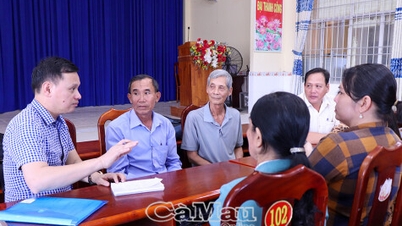






























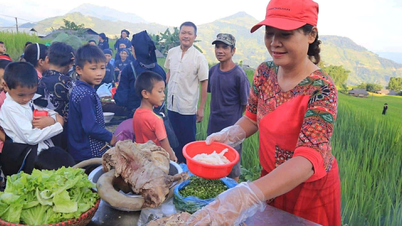













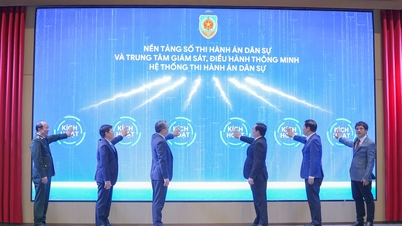
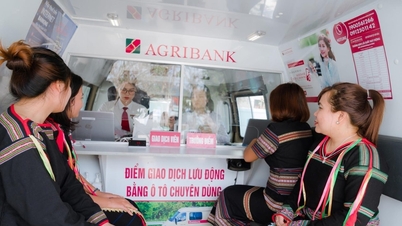
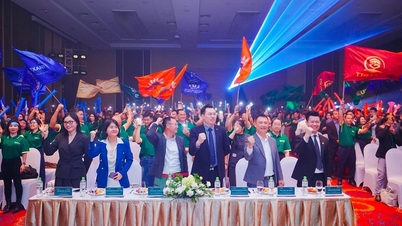
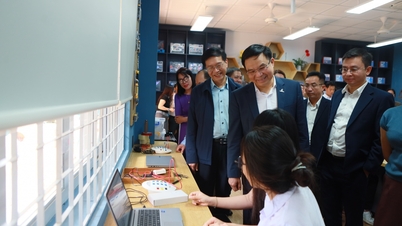





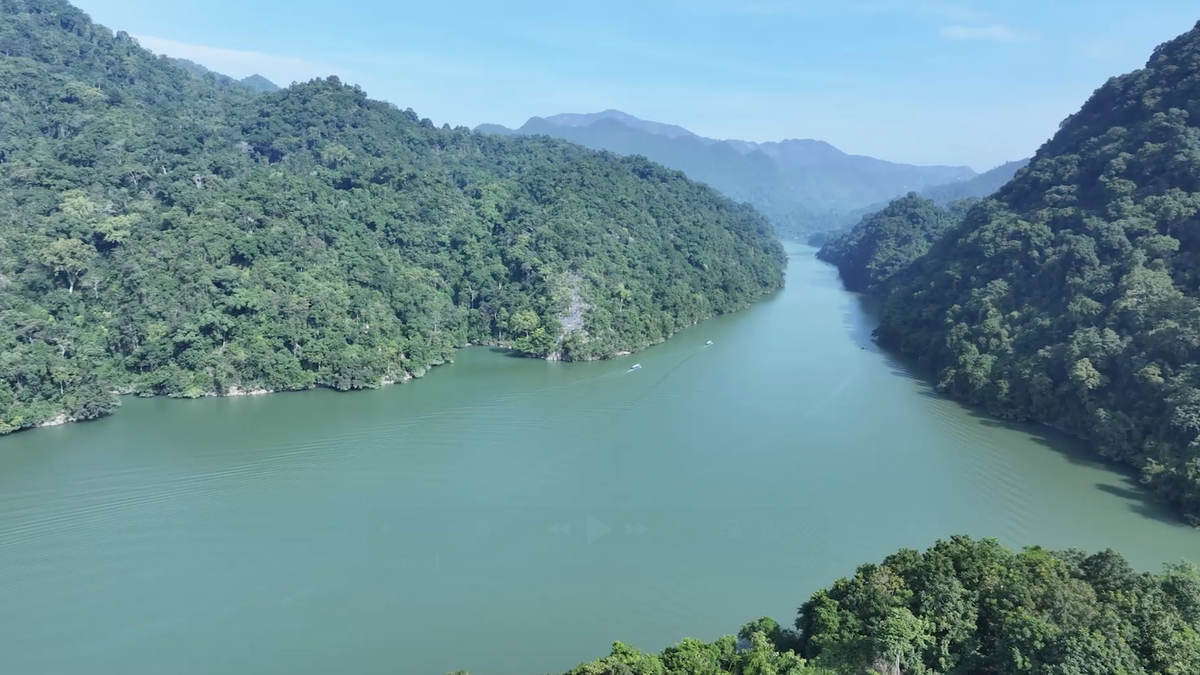
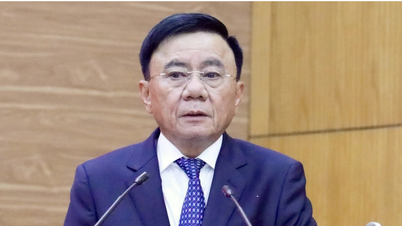









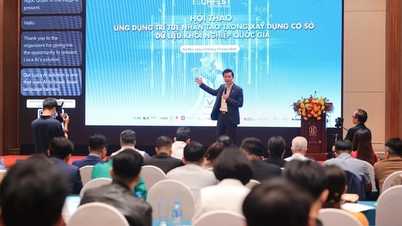



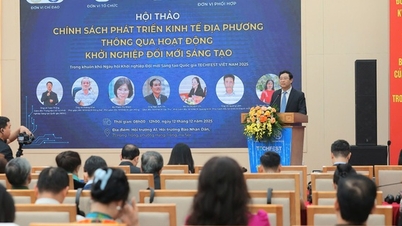




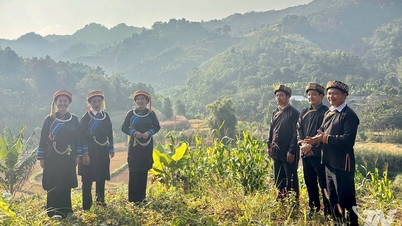









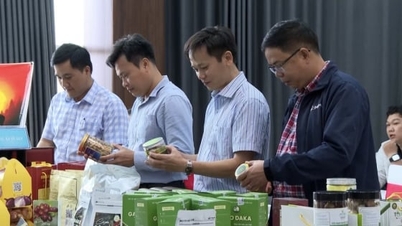


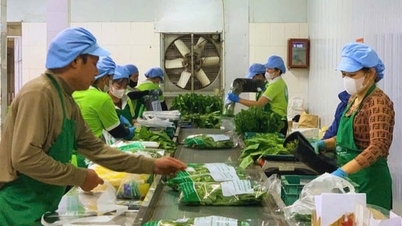


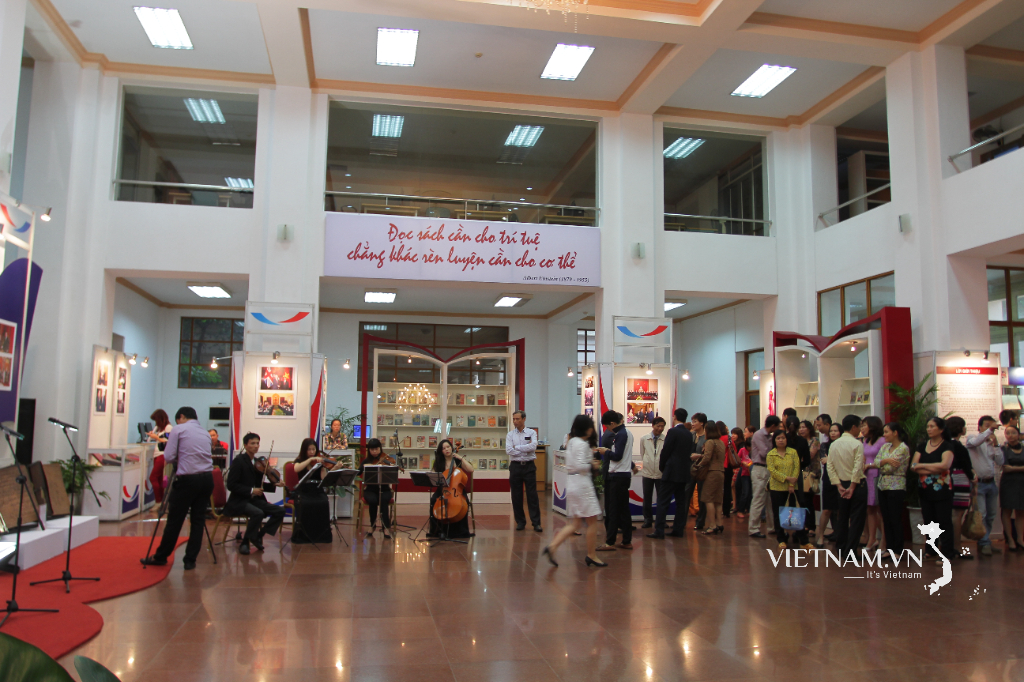



Comment (0)